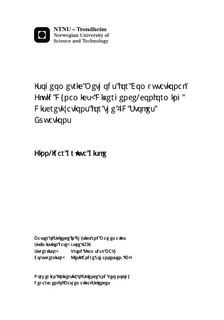Isogeometric Methods for Computational Fluid Dynamics: Divergence-conforming Discretizations for the 2D Stokes Equations
Master thesis
Permanent lenke
http://hdl.handle.net/11250/2352677Utgivelsesdato
2014Metadata
Vis full innførselSamlinger
Sammendrag
In this thesis we look at how boundary value problems for partial differential equationscan be solved numerically using B-splines, or more generally NURBS, both to expressthe geometry of the problem exactly and as a basis for a finite element approximation.This is called isogeometric analysis, and we consider the theory behind the method aswell as aspects regarding implementation. We take a close look at the construction ofB-spline basis functions and geometries, and how the basis can be refined, leading upto the construction of NURBS basis functions and geometries. The ubiquitous Poissonproblem is considered as a model problem, and a numerical solver for this problem isimplemented in MATLAB using Galerkin s finite element method. We finally considera method for numerically solving the Stokes problem for incompressible fluid flow,using divergence-conforming B-splines in an isogeometric setting. This method givesa discrete velocity which is pointwise divergence-free, making the numerical solutionsatisfy mass conservation in an exact sense. Numerical tests are performed, showing thatisogeometric analysis makes it possible to use exact geometry throughout the analysisand provides great flexibility regarding refinement. The convergence properties of themethod for the Stokes problem are investigated numerically, with very good results forthe numerical velocity solution, but with a reduced convergence rate for the pressuresolution that is accounted for. The method is also tested on benchmark problems, theresults confirming the stability of the method.
